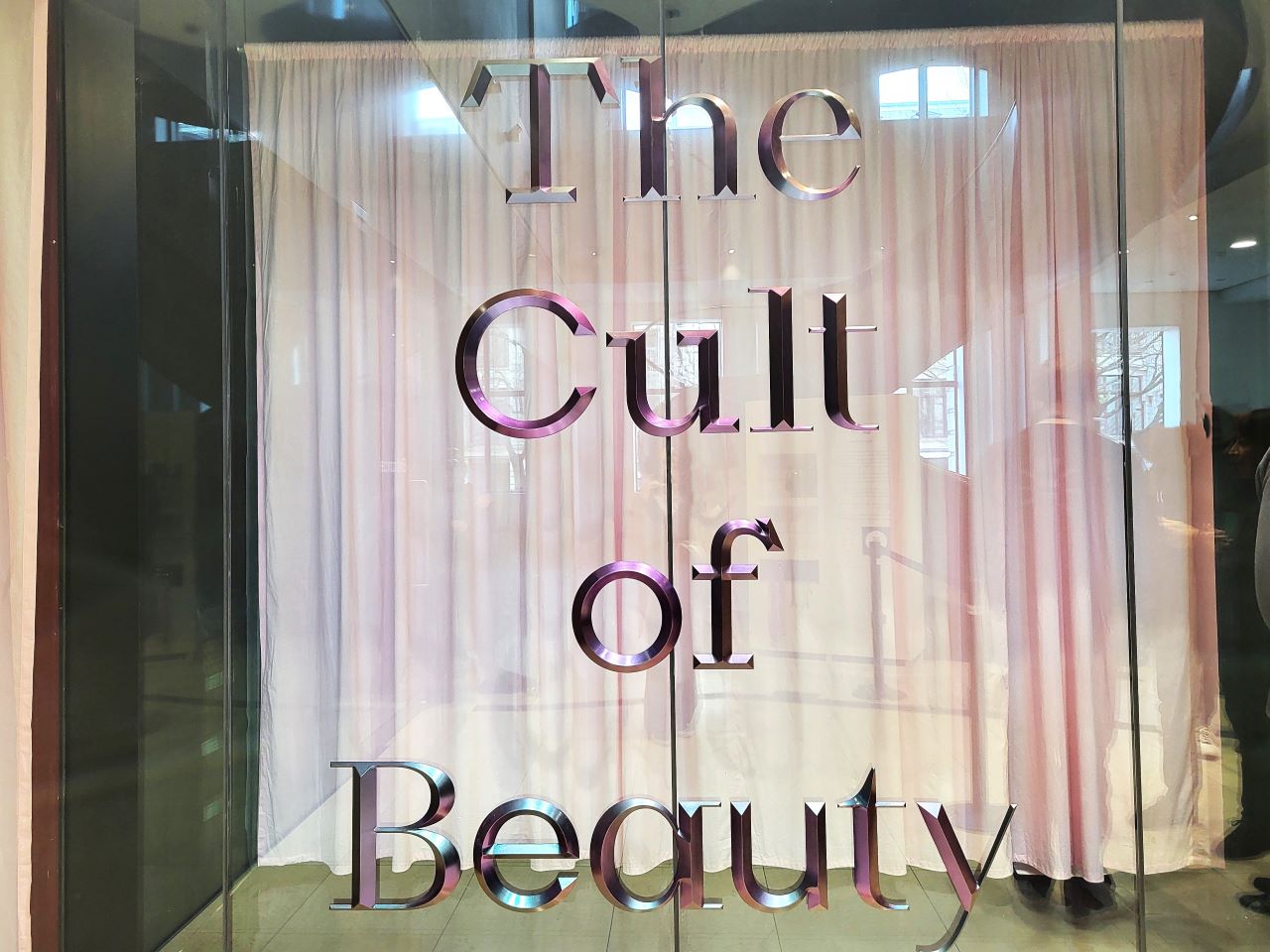When my friend and I were looking for things to do in London last month, one of my friend’s colleagues suggested we visit ‘The Cult of Beauty’ exhibition at the Wellcome Collection.
The free exhibition at the Euston Road museum explores concepts of beauty through the ages and across cultures in the context of gender, race, age, health and status.
We arrived at the Wellcome Collection around 11.30am to find the exhibition was closed until 12pm, so we went off to explore the main collection while we waited.
On coming back at 12pm, we found the museum had put a queuing system in place and after being given a timed ticket for 12.45pm, we popped to Qima Café in nearby Warren Street for a cuppa.
Qima Café

The delightful café bills itself as the “UK’s first tree-to-cup café”, as it sources its coffee from small farmers. Each time it sells a cup of coffee it donates a coffee tree to farmers.
I don’t like coffee so I didn’t try the coffee, but I was more than happy to sample the café’s exquisite patisserie.
They all looked so good, my friend and I were finding it difficult to choose which one to have, so we decided to split two – a yuzu and basil tart (above) and a chocolate and banana tart (below).

Both tasted as good as they looked, although I preferred the flavour profile of the yuzu and basil tart.
One of the things I really liked about the café was that when we ordered, our server booked us a table in the seating area downstairs, which meant we didn’t have to worry about not getting a table after ordering.
It’s a genius idea and I wish more cafés would follow suit.

The service was excellent and the café’s attention to detail was impeccable – the cups and dishes were as lovely as the desserts.
The Cult of Beauty exhibition

Happily sated, we made our way back to the Wellcome Collection for our timed exhibition slot.
The Cult of Beauty focuses on three themes – The Ideals of Beauty, The Industry of Beauty and Subverting Beauty.
We started our tour by exploring The Ideals of Beauty, looking at how beauty standards have differed across cultures and through the ages.

It features a diverse array of artifacts from a painting of The Virgin of Guadalupe in Extremadura to a bust of Egypt’s Queen Nefertiti and marble statues of the human form from ancient Rome.

One of the most thought-provoking artifacts is Humanae (above), a work by Brazilian photographer Angélica Dass, that inventively sets photos of people against their skin tone’s Pantone reference, subverting traditional ideas about race and underscoring just how diverse humans really are.

The Industry of Beauty looks at the many weird, wonderful and, at times, downright dangerous products people have used to enhance their beauty across the ages.

These include 20th century skin care advertisements, toiletry sets, cosmetics, and 17th and 18th century beauty patches from Europe.
It also considers the role surgery plays in helping people achieve their beauty ideals.

The final part of the exhibition, Subverting Beauty (above), showcases works by different artists in which they question existing beauty constructs.
I thoroughly enjoyed the The Cult of Beauty exhibition, although it was too crowded for my liking even with the timed ticketing scheme.
It’s a fascinating, insightful and thought-provoking exhibition, and it really made me think about beauty and our perceptions of beauty in a whole new light.

